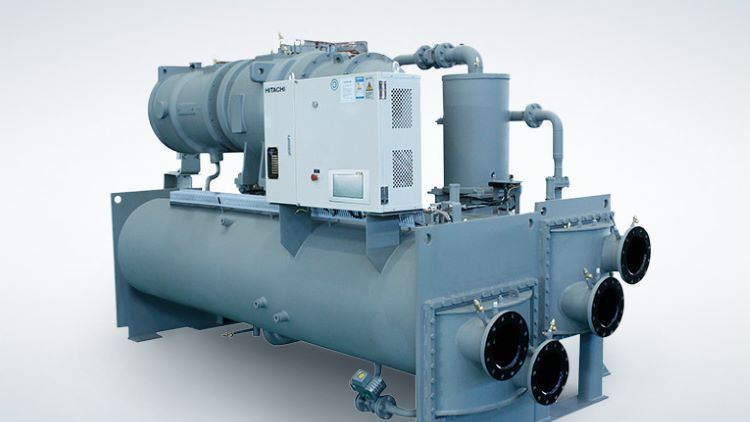HVAC Fundamentals and BMS Controls

Why take this course?
🚀 HVAC Fundamentals and BMS Controls Online Course 🏫
Headline: 🎓 Dive into the World of HVAC with Confidence - From Basics to Mastery!
About the Course:
Free summary PDF file included upon enrollment!
Welcome to our premier online HVAC course, the go-to resource for anyone looking to delve into the fascinating world of Heating, Ventilation, and Air Conditioning (HVAC) systems. Designed with beginners in mind and tailored for those seeking to sharpen their expertise, this course simplifies complex concepts to help you grasp the fundamentals with ease.
Our journey together begins with a comprehensive exploration of the water-side of building air conditioning systems and gradually ascends to mastery over evaluating, optimizing, selecting, and sizing chillers in a typical chiller plant operation. 🏢❄️
In this course, you'll also gain valuable insights into HVAC controls, both air-side and water-side, and learn how to troubleshoot and manage these systems using sophisticated Building Management Systems (BMS). This knowledge is crucial for optimizing HVAC system operations and improving overall energy efficiency.
Our experienced instructor, Mike Lo, employs innovative teaching methods and state-of-the-art technology to demystify the intricacies of HVAC theory and application. With his guidance, you'll transform your understanding of HVAC systems and BMS controls into practical knowledge that you can apply in real-world scenarios.
What Our Students Are Saying:
🚀 "I have struggled with HVAC concepts for a long time. This course has made everything suddenly clear. The clarity of information, practical examples, and thought-provoking problems are outstanding. A great course!" - Zoe Zeiler
🌟 "This course is very well-structured and packed with valuable information. It has given me a solid foundation in HVAC fundamentals and BMS controls. I'm ready to tackle more advanced topics in the field. Great job, instructor!" - Jhoe Missi
📚 "As a seasoned professional with 25 years in HVAC, I still learned a great deal from this course. Mike Lo's explanations of concepts were crystal clear and have helped me deepen my understanding of the mechanical side of HVAC systems." - Bruce
🔧 "As an electrician focused on controls, this course was perfect for gaining a deeper understanding of the mechanical aspects of HVAC. Highly recommended for anyone in the industry!" - Dries Herreman
👍 "A well-designed course that cleared all my doubts. It's an excellent starting point for beginners and thorough for seasoned professionals." - Deepak Kumar Swain
Learning Outcomes and Content:
🎯 Understanding the Refrigeration Cycle:
- Examine the refrigeration cycle using pressure enthalpy diagrams.
- Understand the properties of typical refrigerants.
- Assess the selection considerations for various types of HVAC systems.
⛓️ HVAC System Selection and Evaluation:
- Describe the various types of air-conditioning systems.
- Assess the configuration and efficiency of a chilled water system.
- Evaluate building cooling loads and optimize plant performance.
📊 Building Management System (BMS) Controls:
- Explain controls in both air handling systems and chiller plants.
- Determine strategies to enhance energy efficiency without compromising IAQ.
- Understand the role of BMS in HVAC system management.
💧 Improving Energy Efficiency:
- Assess the performance of a chiller plant.
- Compare different methods for optimizing chiller plant efficiency.
- Explore alternative cooling technologies and their applications.
Enroll Now to Embark on Your HVAC Journey! 🎓🌟
Join us and transform your career with the knowledge and skills needed to excel in the HVAC industry. Sign up today and unlock your potential with our comprehensive online course led by an expert in the field. Let's climb the learning curve together!
Loading charts...
Comidoc Review
Our Verdict
Boasting an impressive global rating of 4.57, this HVAC Fundamentals and BMS Controls course stands out as a top choice for those seeking a comprehensive understanding of heating, ventilation, and air conditioning principles combined with the nuances of Building Management Systems.\n\nAs you embark on your learning journey, anticipate gaining valuable insights into vapor compression cycles, HVAC system selection, energy efficiency strategies, air distribution systems, and chiller plant optimization. Be prepared to engage with interactive modules, hands-on exercises, and insightful real-world examples presented by industry experts.\n\nHowever, bear in mind that the course focuses on the metric system for examples and calculations and offers limited coverage of central AC systems or practical applications involving Imperial units.\n\nDespite these minor shortcomings, we highly recommend this course to e-learners eager to build their knowledge base, enhance skills, and advance their HVAC career prospects while enjoying a flexible and engaging online learning experience.
What We Liked
- The course offers a thorough and systematic examination of HVAC fundamentals and Building Management Systems (BMS) controls, making it an ideal choice for both newcomers and seasoned professionals seeking to solidify their understanding.
- Instructors' knowledge and expertise shine through the content, enabling them to break down complex concepts into clear, understandable components using practical examples and real-world applications.
- Well-structured course with a comprehensive range of topics, including vapor compression cycle processes, HVAC system selection considerations, energy efficiency strategies, air distribution systems, and chiller plant optimization.
- Highly engaging video lectures, interactive modules, and hands-on exercises provide students with an immersive learning experience that caters to various learning styles.
Potential Drawbacks
- Limited focus on central AC systems, particularly those commonly found in residential applications within the US, may leave some learners seeking additional information or resources.
- The course uses the metric system in examples and calculations, which could be challenging for students more familiar with Imperial units to adapt to.
- While the theoretical knowledge presented is extensive, opportunities for real-world problem solving and practical applications are limited compared to the depth of content provided.
- Some students may find the voice clarity of the instructor occasionally unclear or difficult to understand during video lectures.